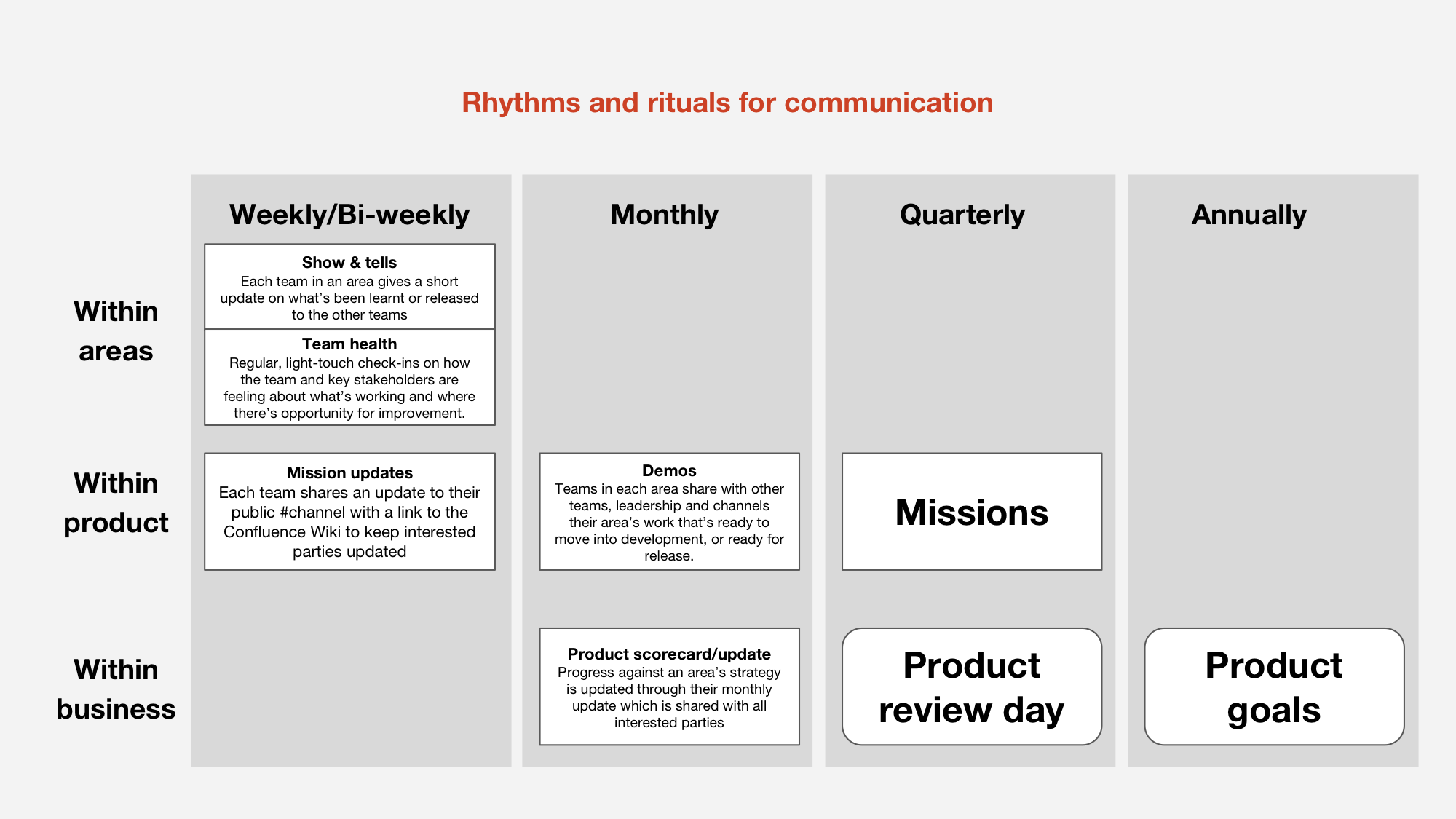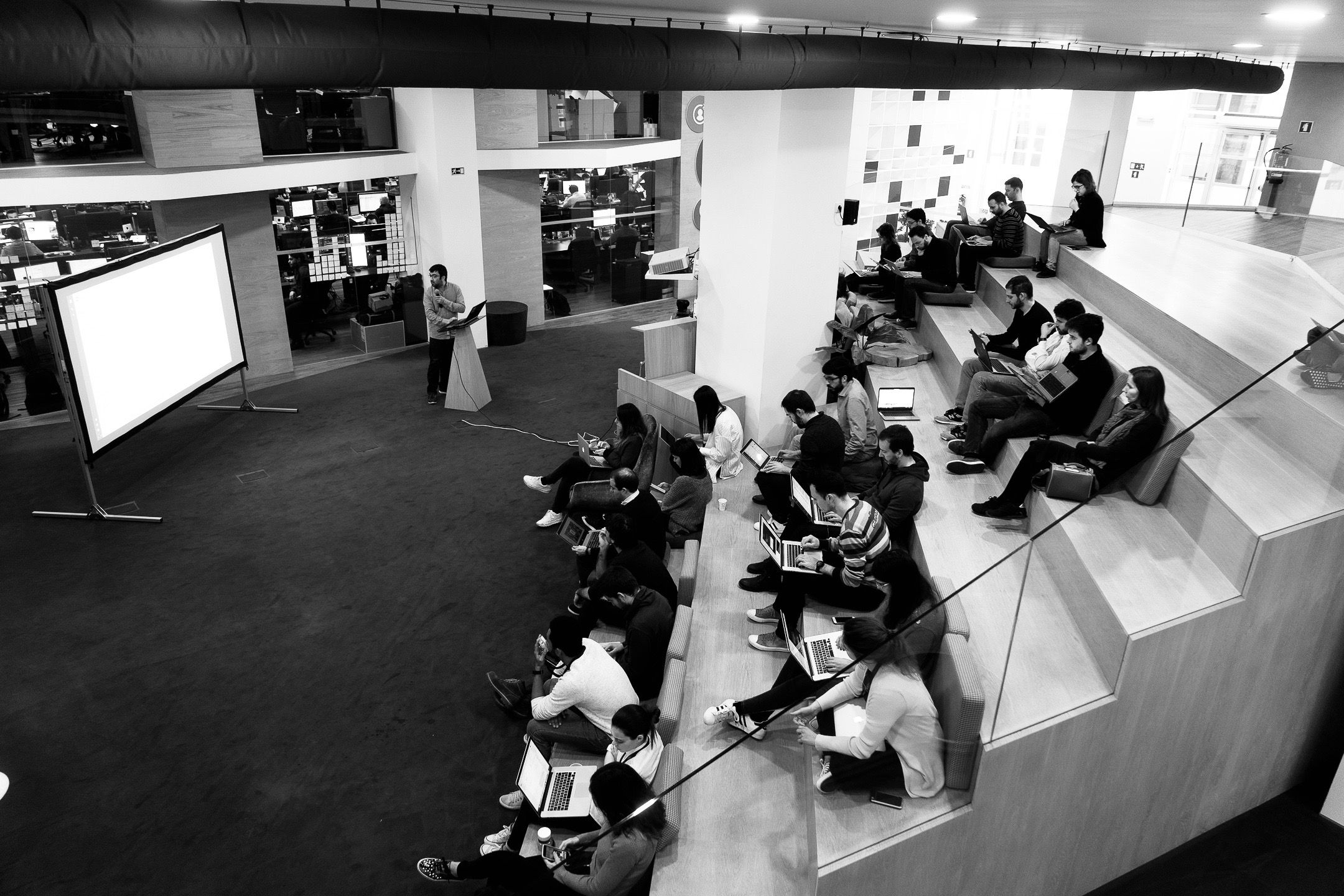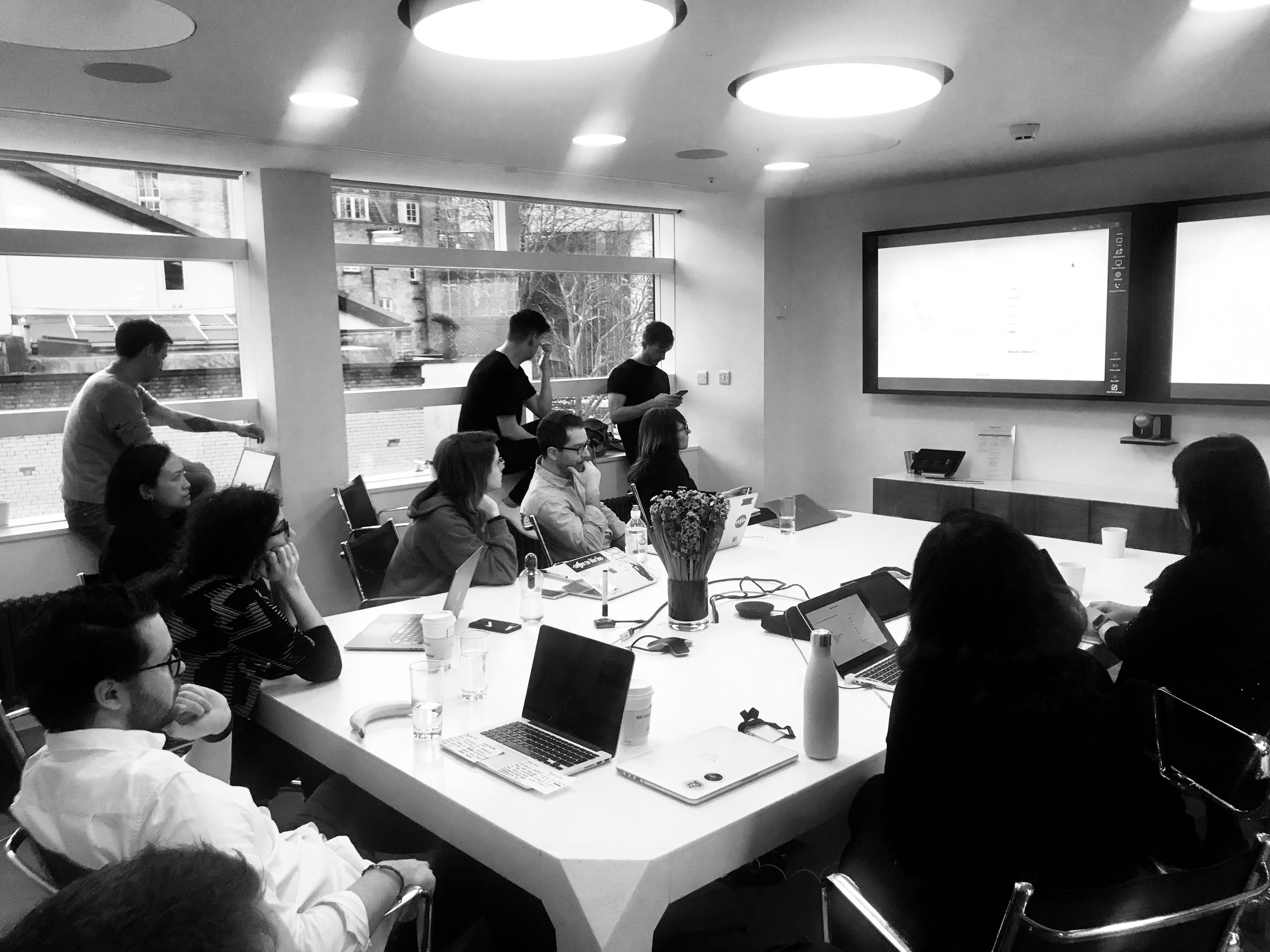Week 17
Pay-offs
We’re beginning to see some of the rituals that we set out start to happen across the teams. One of the most important ones that we identified in our framework was the need for all our Area teams (ie. the teams of teams) to be able to see the work of other teams around Product. It matters for all the obvious reasons, but also because we need to do something about the belief that many of us held, which is that may of us simply have no idea about how1 the work of our teams is reaching our customers - we need better visibility.

This week Kuldeep, Anu and Tai’s work in making Show & Tells happen paid off. Everyone in Product spent Friday morning seeing the work in progress of over a dozen teams from around Europe.
It was fucking glorious.
 The auditorium in Porto
The auditorium in Porto  One of the meeting rooms in London
One of the meeting rooms in London
One of the messages2 that I’ve been banging on about diligently repeating is that show and tells will not be designers showing designs to designers. I’m really pleased to see that we had designers, product managers, researchers, software architects and data scientists all sharing the work of their teams.
Unseen labour
In the previous week I spent some time with everyone in my part of the org; it was long overdue and a good chance to start the year off by reminding us what we were trying to achieve with all the change we’re in and why we were doing it.
When we decided to change the way that Product was working, we did this in recognition of some information which was coming to us very clearly from our teams and the wider org: Product wasn’t working. We were seeing this in the frustration of our stakeholders (‘you’re a black box, we don’t understand what’s going on’) and from our teams (‘our work is unconnected with our customers and their lives’). We’re changing that, but change takes time, effort and persistence. We also need to acknowledge that in any change process there are gains and losses for the people involved.
Something that has been weighing on my mind a lot recently is that I’m asking the designers in Farfetch’s Product teams to help me carry the changes through, to be the ones who are helping the teams they’re working in to think and act in new ways.
And this is hard, often unseen work.
One of the things that I felt I needed to share with the team was that I too found this work hard, and if I’m honest, often unrewarding. Being the person in a team or a group who is facing the resistance or impassivity is emotionally draining. As an example, I had asked my leads to help their teams co-create Team Canvases, but when you’re the person asking the rest of the group to honestly look at the status quo and discuss those unstated expectations or implied roles we have for each other but nobody else sees value in doing so, that’s hard, hard work.
I belive that there are good explanations why we as designers in teams are the ones that carry that work, I think that we have to be honest that we have more to gain than lose by changing the current power structures in teams, that by using our skills and expertise to become more essential within the team3 we will have greater influence and control over the experience we’re creating for our customers.
If you believe in the gains/losses model here, then we have to accept that our pushing to disturb the current equilibrium means that others in our teams will feel loss. I asked our designers to think about how the people they work with may be experiencing the changes we’re making, and to be kind and patient with people – but that doesn’t mean I’m asking them to accept poor behaviour in others.
What I can do with my role is make sure that the message is restated and reinforced by our leadership teams: using our position in the hierarchy to exemplify, express and model the behaviour and values we expect to see in others. By doing this I hope that I make that unseen, often unacknowledged work of designers easier.
And let’s be honest, when.↩
After the struggles with getting everyone to use the same terms for the same things, I’m experimenting with being a bit of a pedant about language. I should write a list down of all them.↩
Rather than sitting in our own ‘design team’ outside of the teams, pointing at drawings and insisting we own the vision.↩
teams work unseen work show & tell rituals practice